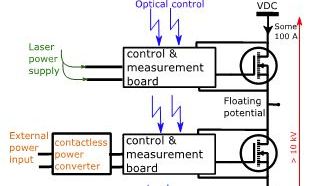Nos actualités
State of the art of gate-drive power supply for medium and high voltage applications
Gate-drive power supplies in medium voltage and high voltage direct current (MVDC / HVDC) applications require medium to high voltage insulation.
PhD Kosei SHINODA “Control and Energy Management of MMC-based Multi-Terminal HVDC Grids”
The scope of this thesis includes control and management of the Modular Multilevel Converter (MMC)-based Multi-Terminal Direct Current (MTDC).
PhD Kosei SHINODA “Control and Energy Management of MMC-based Multi-Terminal HVDC Grids”
The scope of this thesis includes control and management of the Modular Multilevel Converter (MMC)-based Multi-Terminal Direct Current (MTDC).
PhD Swann GASNIER “Decision support framework for offshore wind farm electrical networks: Robust design and assessment under uncertainties’’
Large offshore wind farms will be important players within the future energy landscape. What is the expected benefit for a project is an essential issue from Investor side, considering both technical and economic aspects. Levelized Cost Of Energy - LCOE - is a standard economic indicator which allows to assess the economic viability of a project.
PhD Swann GASNIER “Decision support framework for offshore wind farm electrical networks: Robust design and assessment under uncertainties’’
Large offshore wind farms will be important players within the future energy landscape. What is the expected benefit for a project is an essential issue from Investor side, considering both technical and economic aspects. Levelized Cost Of Energy - LCOE - is a standard economic indicator which allows to assess the economic viability of a project.
Participation of SuperGrid to the ISH 2017 Conference
For 40 years, the biannual conference ISH (International Symposium on High Voltage Engineering) has permitted to researchers all around the world to meet and share their research in the high voltage field. The 2017 edition took place from August 28 to September 01 in Buenos Aires, Argentina.
Participation of SuperGrid to the ISH 2017 Conference
For 40 years, the biannual conference ISH (International Symposium on High Voltage Engineering) has permitted to researchers all around the world to meet and share their research in the high voltage field. The 2017 edition took place from August 28 to September 01 in Buenos Aires, Argentina.
Supplying Power to HV (≥10kV) control and measurement boards: a challenge to overcome
New high-voltage power electronic converters and facilities for transmission grids tend to have multiple power switches at different floating potentials. Moreover, the trend goes towards the use of power switches with higher operating voltages (up to 10kV), in order to reduce the number of switches by system.
Supplying Power to HV (≥10kV) control and measurement boards: a challenge to overcome
New high-voltage power electronic converters and facilities for transmission grids tend to have multiple power switches at different floating potentials. Moreover, the trend goes towards the use of power switches with higher operating voltages (up to 10kV), in order to reduce the number of switches by system.
Influence of Electric Field on Space Charge Distribution in Alumina-filled Epoxy Resin for Application in HVDC GIS
The present paper deals with space charge in alumina filled epoxy resin for HVDC applications.






